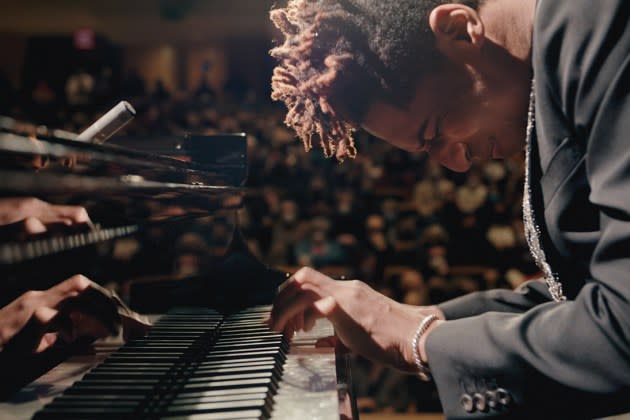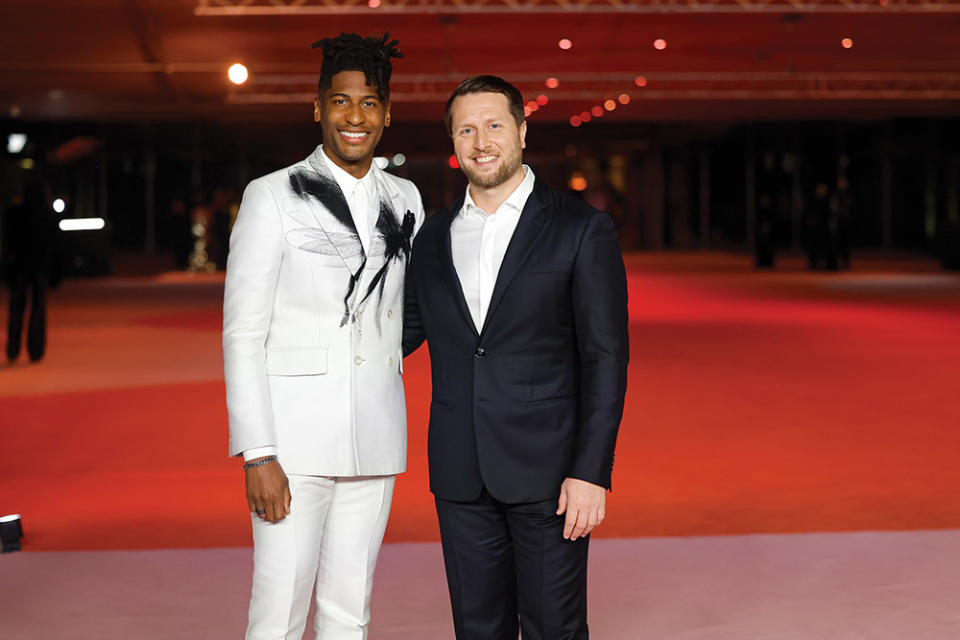‘American Symphony’ Director Matthew Heineman, Subject Jon Batiste Say There Were Many “Question Marks” While Making the Film
- Oops!Something went wrong.Please try again later.
- Oops!Something went wrong.Please try again later.
- Oops!Something went wrong.Please try again later.

When director Matthew Heineman and musician Jon Batiste began their second collaboration after The First Wave — a harrowing documentary in which Heineman embedded himself in a New York hospital during the early days of the COVID pandemic, and for which Batiste provided the score — the project was much less fraught than its predecessor.

American Symphony follows the former Late Show With Stephen Colbert bandleader during a career high: receiving a monumental 11 Grammy nominations for his 2021 album We Are (which won album of the year and four other prizes in April 2022) and preparing for a one-night performance of the titular composition at Carnegie Hall. Batiste, by all assumptions, was on top of the world.
More from The Hollywood Reporter
Casey Bloys Reflects on HBO's Emmys Dominance, Looks Ahead to 2024 - and 2025
How 'Oppenheimer' Production and Costume Designers Brought Christopher Nolan's Vision to the Screen
Emmys Producers on the 'Friends' Dilemma, Mama Doris and the Show That Really Almost Wasn't
But privately, things were much more complex. His partner, writer and musician Suleika Jaouad, was afflicted with a rare form of cancer that, after going into remission nearly a decade earlier, had returned. Suddenly, the film became about Batiste and Jaouad’s shared battle against the odds as much as it focused on Batiste’s career success.
The director and musician spoke with THR about their collaboration on the Netflix film, which has earned spots on three Oscar shortlists: for best documentary feature, original score and original song, “It Never Went Away,” written by Batiste and Dan Wilson.
What’s the biggest surprise in how people have reacted to the film?
MATTHEW HEINEMAN Our intention in making this film [was that] we didn’t want everyone to come away with the same conclusion. The reactions of the last couple of months have borne that to be true. At a time when our world is so complex — and a lot of us are living through some version of an existential crisis — the beautiful thing about the film is the way Jon and Suleika confront adversity. It’s a beautiful road map for us all.
JON BATISTE I feel like it’s theirs: Now the film is for everyone in the world. That’s what art is — when you make a piece of art, whether it’s a book or a painting or a symphony, it becomes the property of the public, and it becomes a part of collective memory. And the way it’s compiled — all of the incredible vision that it takes to put it all together as a piece of art — is what is the most impactful. I’m glad that millions of people out there have responded to it. Because I lived it, it’s kind of hard for me to watch at this point.
When did it dawn on you that in telling your story, you’d be giving up part of it?
BATISTE When we started this, it was three friends creating, hashing things out, really committed to doing something that’s honest, true, vulnerable and real — all of the values that we all share. That was before we had Netflix on board, broadcasting this film to the whole world, and the Obamas signing on to be [producers]. It was our world and us really just pushing ourselves in our respective areas [as artists]. And that was the best-case scenario, because I don’t know if I would have been able to let go of so much had I known where we would end up.
HEINEMAN Everything feels so inevitable with the film right now. But for the vast majority of making it, there are so many question marks. Would Suleika be part of the film? Would she survive? Would Jon be able to pull off the symphony? How are we getting our funding for the film? In both in front of and behind the camera, [there were] so many unknowns up until we premiered it at Telluride.
What was it like to compose the score for a film in which you’re also its subject?
BATISTE I had to live through the filming first, then address what happened in the life that was captured and figure out the thematic resonance to the symphony. You’ll hear themes that were in the symphony become themes in the score and then ultimately come together in the song that is at the end of the film. Everything flows in and out of each other, which is really difficult, to blend compositional music with song-based music. All the things that we drew from to make the symphony went into the score and are also part and parcel with the symphony. It was like art imitating life imitating art imitating life.
HEINEMAN While I can’t write music or talk about chord progressions, I have a decent ear for music. Obviously, this is Jon’s world and Jon’s palette. For a film in which we shot 1,500 hours, we probably have about 300 hours of Jon just jamming, practicing and performing in different ways. The soundscape was really something that I wanted to match the energy, and it was fun editorially to start in a diegetic moment and then have that piece of music take us into another place or another realm. There’s a song that Jon wrote, or improvised really, during the performance at Carnegie Hall. I probably listened to that song 400 times; it became the anthem to the making of the movie. It’s sort of similar to the whole process of making this film. We’re constantly in dialogue in a way that I’ve never been with people that I filmed with.
This story first appeared in a January standalone issue of The Hollywood Reporter magazine. Click here to subscribe.
Best of The Hollywood Reporter

